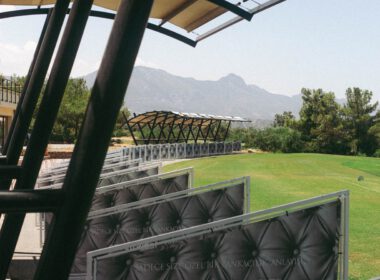Although Cyprus is mainly associated with vacationing, beaches and walks, it is also worth coming here because of the monuments. As many as three of them are on the UNESCO World Heritage List.
Breathtaking mosaics
The archaeological complex in Paphos was the first to be listed by UNESCO back in 1980. It is not a single site, the pleasure of viewing this monument is spread over two locations and many historical remains. The first location is the archaeological park in Kato Paphos, a coastal part of Paphos city. The remains of the ancient city of Nea Pafos (New Paphos) are located there. The preserved monuments date from various periods, from the 4th century BC to the Middle Ages, but the vast majority are Roman. To be seen are the remains of buildings of various character – odeon, agora, asclepiejon, castle, villas, cemetery, early Christian basilica. Among the many attractions gathered in an area of more than 200 hectares, the villas with mosaics and the Tombs of the Kings stand out. Located somewhat off to the side, the tombs owe their name not to the kings buried here, but to their impressive appearance. Arranged on different levels, the groups of tombs captivate with their structure and mysterious atmosphere. However, what impresses most in Nea Paphos are the remains of ancient villas with mosaics. On the grounds of the four villas named after mythical heroes – Dionysus, Aion, Theseus and Orpheus – there are perfectly preserved, extremely elaborate floor mosaics depicting scenes related to each villa’s patrons. They were discovered by accident during agricultural work in the early 1960s, and Polish archaeologists were also involved in restoring them to the world. They are a testament to the great wealth of ancient Paphos, the preparation of such intricate mosaics required artistic craftsmanship and considerable financial resources.
The second location of this archaeological complex is Kouklia, a village 16 kilometers from Paphos. The old Paphos, Palaipafos, was located there before it was moved to the present area. The ruins of the former town and the remains of the temple of Aphrodite, who, according to accounts, was said to have been born in the vicinity of this place from the sea foam. For this reason, Palaipafos was an important religious site in ancient times.
Painted churches in the mountains
In 1985, another monument from Cyprus appeared on the UNESCO World Heritage List. And once again it is not a single site, but a whole complex. This time it’s Byzantine heritage. The 10 churches located in the inland Trodos mountains are examples of rural sacred architecture. Thanks to their location away from the main routes, they have missed many wartime turmoils and survived in very good condition, and wall paintings showcasing Byzantine and post-Byzantine art in Cyprus have also survived. The complex includes churches and monasteries – Agios Nikolaos tis Stegis, Agios Ionannis Lampadistis, Panagia Phorviotissa (Asinou), Panagia tou Arakou, Panagia tou Moutoulla, Archangelos Michail, Timios Stavros, Panagia Podhithou, Stavros Agiasmati and Agia Sotira tou Soteros. The oldest of them date back to the 11th century, while the latest are from the 16th century, so they show the development of architecture and painting over the centuries. An additional attraction associated with visiting the painted churches is their beautiful location, in mountainous landscapes, far from the most touristic places on the island.
Neolithic treasure
Cyprus waited for another entry on the World Heritage List until 1998, when another archaeological site was added to the venerable group of most valuable monuments – this time the Neolithic settlement of Choirokoitia, located in the Larnaca district. The site, dated to the 6th millennium BC, is considered an extremely important testimony to the development of Neolithic civilization in the eastern Mediterranean. It indicates the role of prehistoric Cyprus in the transmission of Middle Eastern culture to the European world. Excavations show that the settlement consisted of round houses built of brick and stone, covered with flat roofs. The entire settlement was created according to a preconceived plan, which confirms a well-organized social organization. When visiting the site, it is worth keeping in mind that the archaeological site is only a part of the settlement, still not everything has been exposed. At the excavation site, the found elements were secured without interfering with their structure. Five houses and a section of the defensive wall were reconstructed, but this was done outside the original site so as not to disturb the historical find. This made it easier for visitors to imagine the former appearance of the most important elements of the settlement, while at the same time preserving the integrity and full reliability of the excavation.






